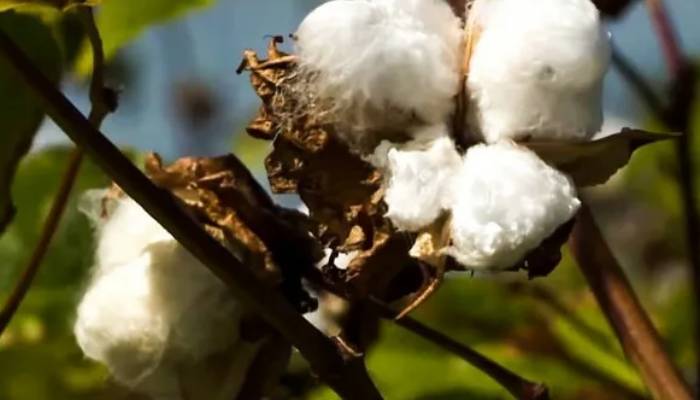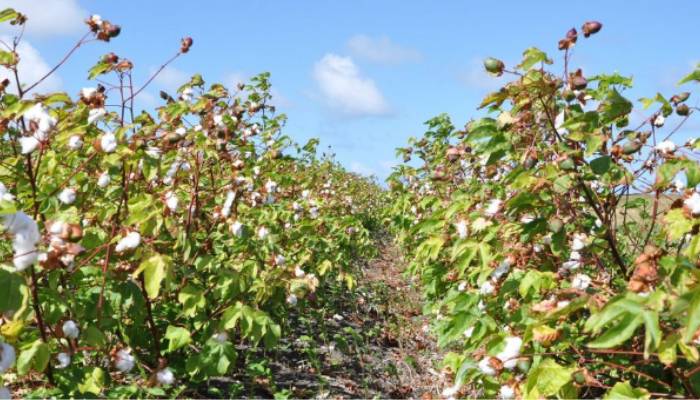Sea Island Cotton, known scientifically as Gossypium barbadense, is celebrated for its exceptional softness and quality. Primarily grown in the West Indies, particularly in Barbados, Antigua, and Jamaica, the unique climate and soil conditions in these regions significantly enhance its distinctive characteristics.
1. Properties
Sea Island Cotton boasts fibers that are among the longest in the world, which contributes significantly to the fabric’s smooth texture and robust strength, making it highly resistant to tearing and wear. The fine and smooth nature of the fibers imparts a silky texture to the fabric, offering a luxuriously soft feel that is also hypoallergenic, ideal for those with sensitive skin or allergies.

The cotton’s natural sheen and ability to absorb dyes result in vibrant, uniformly colored fabrics that exude luxury. Insights into the genetic diversity of Sea Island Cotton help explain why its fibers are uniquely superior, shedding light on breeding strategies that enhance these desirable traits.
2. Uses Across Industries
Due to its superior quality, Sea Island Cotton finds its way into various high-end applications. It is ideal for crafting luxury shirts and blouses, thanks to its durability and softness. Its hypoallergenic properties make it perfect for underwear and lingerie, while its aesthetic qualities enhance the elegance of dresses and skirts. In home textiles, it is a preferred material for premium bed linens and plush towels, valued for both comfort and durability.
3. Historical and Modern Perspectives
From Origins to Economic Staple
Introduced to the coastal regions of South Carolina and Georgia around 1784, Sea Island Cotton adapted well to the long growing season and sandy soils, quickly becoming a local economic staple.

By the early 1800s, it had garnered a reputation for its long, silky fibers, fetching premium prices, especially in European markets. The cultivation of this cotton type was intricately linked to the antebellum South’s reliance on enslaved labor under a task system, which organized farming efforts for maximum efficiency.
Challenges and Resurgence
The American Civil War marked a significant turning point, as it led to the devastation of many plantations and a drastic change in the labor force. The subsequent introduction of the boll weevil further hindered production by destroying crops, leading to a shift towards other cotton varieties that were easier to grow across different regions.
Despite these challenges, there has been a revival of interest in Sea Island Cotton. Small-scale cultivation has resumed in its original regions and expanded to places like Barbados, driven by a niche market that values its exceptional qualities. The historical and cultural significance of Sea Island Cotton in the American South continues to influence its resurgence and preservation.
4. Sustainable and Ethical Considerations
In modern cultivation practices, many producers have embraced organic farming methods to avoid harmful chemicals and utilize efficient irrigation techniques to conserve water. The fabric’s durability also contributes to sustainability by reducing the need for frequent replacements and minimizing waste.
Additionally, adherence to ethical labor practices ensures fair wages and safe working conditions for workers. The push for sustainable and ethical production practices is crucial in maintaining the integrity and appeal of Sea Island Cotton in the luxury textile market.
5. Comparisons with Other Cottons
| Feature | Sea Island Cotton | Egyptian Cotton | Pima Cotton |
|---|---|---|---|
| Fiber Length | 1.5 to 2.5 inches | 1.5 to 2.25 inches | 1.4 to 1.6 inches |
| Softness | Extremely soft and silky | Very soft | Soft |
| Durability | High | High | Medium to High |
| Appearance | Natural sheen, vibrant colors | Lustrous, can be less vibrant | Less sheen compared to Sea Island |
| Common Uses | Luxury apparel, fine linens | High-quality bed sheets, towels | Quality garments, home textiles |
| Price Range | Premium | Moderate to premium | Moderate |
6. FAQs
What Makes Sea Island Cotton So Special?
Sea Island Cotton’s unique combination of long fibers, silky texture, and natural sheen sets it apart from other cotton types. Its cultivation in the specific climate of the West Indies also contributes to its superior quality.
How Should I Care for Sea Island Cotton Fabrics?
To maintain its luxurious feel and appearance, wash Sea Island Cotton fabrics in cold water with a mild detergent and avoid using bleach. It is best to air dry or tumble dry on low heat.
Is Sea Island Cotton Worth the Investment?
Yes, due to its durability, comfort, and timeless elegance, Sea Island Cotton is a worthwhile investment for those seeking high-quality textiles.
